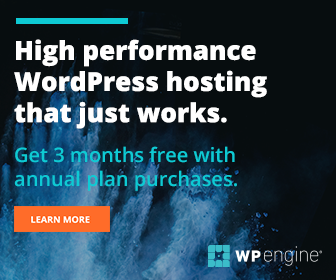How to Choose a CMS
3. The Logistics
At some point, you have to deal with limitations. You don’t have all of the choices in the world, because there are probably restrictive factors to your decision. These might be things that the client asked for specifically or limitations on your time, budget, or hardware.
In the industry, we call some client requests “sacred cows.” These are the things that the client has asked for that cannot be questioned. This sort of attitude could apply to choosing a Content Management System as well. Maybe their last website used such and such a CMS and they never want to touch it again. Or maybe the neighbor kid down the street told them that such and such is the best CMS out there. They’re determined to use it. You can try to convince them as much as you want, but you might as well be blowing hot air. While we recommend that you communicate what you feel their best options are, you need to be prepare to be flexible and accept some requests that the client makes.
There may be technical, or hardware limitations at times that must be complied with. Sometimes there’s a pre-existing system that must be tied in with, or a requirement that you have to use the Perl programming language because their in-house programmer knows that the best (sigh). You may not always have a choice of where you want to host the website, they may want it hosted on their in-house server, or you may have to use their web hosting partner for some political reason like the boss is friends with the other company’s bosses nephew.
The ominous timeline is always a limiting factor. They want it yesterday, done well, for half the price. If you have a tight deadline coming up, you probably won’t have time to custom code in special features. You’ll most likely need to rely on a system that has almost all of the features already as a part of it, or be pretty sure that you’ll be able to achieve that kind of functionality through modules/plug-ins/extensions. Of course, we should point out that with tight deadlines, it’s easy to want to jump in right to the designing and coding process without doing all of your homework up front. This is always a mistake because it will cost you time at the end of the project as you discover more and more requirements that you never asked about at the beginning. You have been warned!
Budget can also mandate which systems you can, and cannot use. Some enterprise level CMS’s can cost tens of thousands of dollars to implement. Other, smaller, commercial offerings can start at prices as minimal as $100. Some hosted CMS’s have monthly costs. There are also free, open source offerings that can be considered. Some clients are cheap, and automatically go for the free option without hesitation. Others are wary of free, open-source projects and would rather have the security of another company’s support desk at their fingertips. Either way, this should be a discussion early on in the project. It’s a good idea to include verbiage in your proposal that outlines what “outside costs” are not included in the proposal, such as the cost of a Content Management System.
Finally, you have to consider your own capabilities. While it’s possible that everyone can probably learn given enough time. It may be time, or cost prohibitive for you to learn a completely new system. If you’re a designer, and not really comfortable with programming, don’t pretend you are a programmer and go with a system that requires it for simple functionality. What we recommend is learn a few systems, learn an overwhelmingly simple one for those clients that just want something easy. Then, start to slowing learn a more complex system so that you have that capability in your pocket when a big client comes asking for it. Know your own strengths and weaknesses. If you really aren’t comfortable with programming, get to know a good programmer who you trust and can outsource some work to when needed.
Next Section: Conclusion & Checklist
